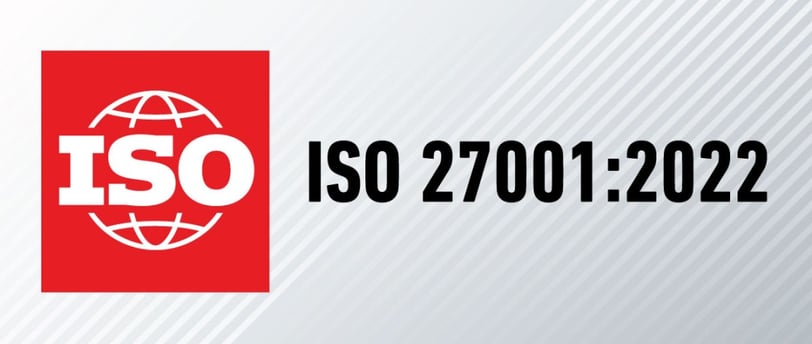A Comprehensive Guide to Implementing ISO 27001:2022
A Step-by-Step Approach


Introduction:
Implementing ISO 27001:2022, an Information Security Management System (ISMS), requires careful planning and execution. This comprehensive guide outlines a structured 12-step approach, based on Deming’s Plan-Do-Check-Act model, to effectively implement ISO 27001. By following these steps, organizations can safeguard the confidentiality, integrity, and availability of their information assets while adhering to ISO 27001:2022 standards.
Step 1 – Define Objectives:
Before embarking on the ISO 27001 implementation journey, it's crucial to define clear objectives. This involves ensuring alignment across the organization on the goals and outcomes expected from the ISMS implementation. Having top-level support and a designated champion for the project are essential to driving success.
Step 2 – Define Scope:
Next, organizations need to define the scope of their ISMS implementation. This entails identifying the specific information assets that require protection and considering all relevant stakeholders' expectations. High-level process mapping can help delineate where the sensitive information resides, who accesses it, and the systems involved.
Step 3 – Make an Inventory of Assets:
Creating an inventory of assets is a fundamental step in understanding what needs protection within the defined scope. This inventory should include not only information assets but also associated hardware, software, databases, and physical locations. Process mapping aids in visualizing the assets and their relationships within the organization.
Step 4 – Define Risk Management Framework:
Central to ISO 27001 is the risk management process. Organizations must establish a robust risk management framework that ensures consistent assessment and treatment of risks. While the standard doesn't prescribe a specific framework, it mandates a process that produces reliable risk scores and treatment options.
Step 5 – Identify and Score Risks:
ISO 27001 recommends two approaches to identifying and scoring risks: the scenario-based approach and the asset-threat-vulnerability approach. While both methods have their merits, the asset-threat-vulnerability approach is favored for its practicality, especially for organizations lacking deep information security expertise.
Step 6 – Develop Risk Treatment Plans:
For each identified risk, organizations need to develop risk treatment plans. These plans outline how risks will be addressed, considering options such as risk avoidance, mitigation, transfer, or acceptance. Implementing controls is a key aspect of risk treatment, aimed at reducing the likelihood or impact of identified risks.
Step 7 – Verify Against Annex A Controls:
ISO 27001 provides a list of 93 controls in Annex A, which organizations must consider for their ISMS. However, it's crucial not to prioritize controls over risk assessment. Instead, verify risk treatment plans against Annex A controls to ensure comprehensive coverage while avoiding unnecessary complexities.
Step 8 – Write Documentation:
With a clear understanding of risks and risk treatment plans, organizations can efficiently document their ISMS policies and procedures. While not all procedures require formal documentation, complex or infrequently performed processes benefit from clear documentation to minimize errors.
Step 9 – Implement Technical Solutions:
In parallel with documentation, organizations should implement technical solutions to mitigate identified risks. This may involve deploying security measures such as access controls, encryption, or intrusion detection systems to bolster information security defenses.
Step 10 – Manage Change:
Effective change management is critical throughout the ISMS implementation process. Organizations must anticipate the impact of changes on people, processes, and systems. Training, communication, and stakeholder engagement are essential elements of successful change management.
Step 11 – Operate the ISMS:
Once the ISMS is in place, organizations enter the "Check" and "Act" phases of the PDCA cycle. Regular internal audits, performance measurements, and monitoring ensure that policies and procedures are effective in managing risks. Governance structures review outcomes and make necessary adjustments.
Step 12 – Continuous Improvement:
Continuous improvement is ingrained in ISO 27001's philosophy. Organizations should view ISMS implementation as an ongoing cycle of improvement. By regularly reviewing and refining processes, organizations can adapt to evolving threats and maintain a robust information security posture.
Conclusion:
Implementing ISO 27001 requires a systematic and well-structured approach that prioritizes risk management. By following the 12-step process outlined in this guide, organizations can establish an effective ISMS that safeguards their valuable information assets. With a commitment to continuous improvement and adherence to ISO 27001:2022 principles, organizations can mitigate risks and enhance their overall security posture.